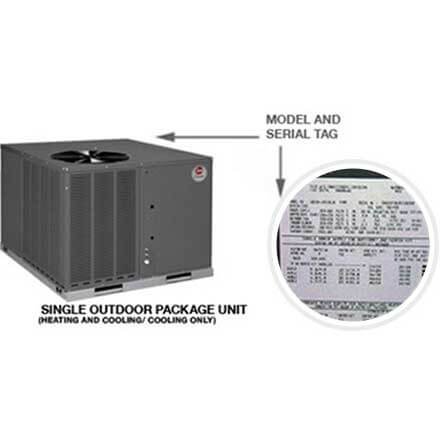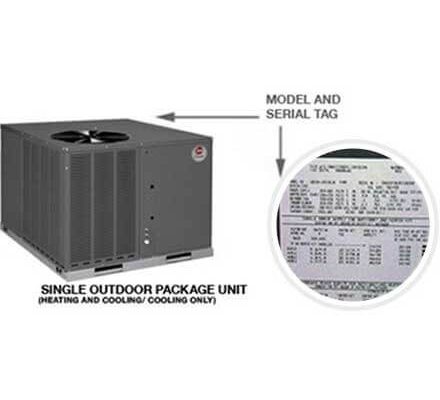
Let me explain why this is such a common debate. HVAC systems aren’t exactly pocket change. When you invest in a Rheem system—known for their reliable performance and high-tech features—there’s a sense of peace of mind during the coverage of the standard manufacturer warranty. But once that safety net starts to fade, the idea of surprise repair costs is enough to raise anyone’s blood pressure. So, is an extended warranty for your Rheem HVAC system worth it? Let’s dig through what these warranties really offer, where they shine, and where they might fall flat.
Understanding Rheem HVAC Warranties: What’s Actually Covered?
Before you can decide if an extended warranty is a smart move, it helps to know what you’re really getting into. Rheem—like most major HVAC brands—offers a standard limited warranty that covers core parts, typically for 5 to 10 years. These warranties are solid, but they’re also full of fine print. For instance, they usually *don’t* cover labor costs, just the big-ticket parts like the compressor or heat exchanger.
So, if your system throws a fit and the motherboard or remote control needs code or sync troubleshooting, the part itself might be free under warranty, while the repair bill (labor) is on you. Extended warranties, on the other hand, are designed to kick in and pick up those costs—sometimes covering labor, sometimes even the service calls.
Here’s the thing: not all extended warranties are created equal. Some are handled directly by Rheem (branded as “Protection Plus”), while others are third-party or sold through your installer. The details can make or break the value, so it’s worth reading the full warranty document—even if it feels like decoding a secret message.
The True Cost of Repairs: What Can Go Wrong With Your Rheem System?
You might be wondering: how often do HVAC systems actually break down? After all, Rheem has a reputation for reliability, and most of their stuff is built to last. But even the best systems can hiccup well before their time. Sometimes it’s something as simple as a thermostat refusing to pair or needing a reset. Other times, it’s a failed compressor or a circuit board fried by a power surge.
*Let’s talk dollars.* A basic service call—just for a technician to show up—can run $100–$200, and that’s before they actually *fix* anything. Parts like a remote sensor or code board can be under $100, but bigger jobs, like replacing a heat exchanger, can easily top $1,000 when you add in labor. Extended warranties are like an insurance policy for these “big gulp” repair bills.
But there’s a catch. Most new Rheem HVAC systems don’t need major repairs in the first few years. So you’re really betting on something going wrong in years six, seven, or ten. If your system behaves (and many do), an extended warranty might feel like money down the drain. But if you end up on the unlucky side, that coverage could pay for itself in a single repair visit.
How Do Extended Warranties for Rheem Work?
If you decide to go for an extended warranty, here’s a peek behind the curtain. Typically, you’re adding years to your original coverage—sometimes up to 10 or even 12 years total for parts and labor. The process is pretty simple: you register your Rheem system (usually needed to “activate” any warranty), then purchase additional protection before the standard warranty runs out.
Some extended warranties are sold by Rheem itself; others are through third-party providers. *Honestly, the details are everything.* For example, a Rheem “Protection Plus” plan covers most labor costs, system troubleshooting, and sometimes even things like code resets or remote battery issues. Third-party plans vary wildly, so always read the terms carefully.
One thing to note: extended warranties don’t cover everything. Issues caused by improper installation, skipped yearly maintenance, or using non-Rheem parts might void your coverage. So yes, keeping up with regular filter changes and scheduled service visits isn’t just good for your system—it also keeps your warranty happy.
Comparing Extended Warranty Options: OEM vs. Third Party
When you buy a new car, you can get the manufacturer’s extended warranty—or something similar from an outside company. It’s the same with Rheem HVAC systems. You can stick with Rheem’s own plans, or go with a third-party company your installer recommends.
Here’s where it gets interesting. Manufacturer (OEM) warranties, like Rheem’s own Protection Plus, tend to be a little more expensive. But you’re getting that *brand trust*—and usually, easier claims. If you call for help with troubleshooting, code resets, or even getting a remote to sync properly, you can expect a smoother process.
Third-party plans can be cheaper, but sometimes they have more loopholes or slower service. Claims might take longer, and some repairs (like battery replacements or minor resets) may not be covered unless spelled out. If you’re a details person, a side-by-side comparison can be helpful:
| OEM (Rheem) Warranty | Third-Party Warranty |
| Brand-backed, hassle-free claims Often better for troubleshooting Trusted repair network |
Lower upfront cost More variable coverage May have longer claim times |
It’s a bit like picking between the *official* phone case at the Apple store and a knock-off that looks the same on Amazon. Both might work, but if something goes wrong, the brand name usually means less stress.
Does an Extended Warranty Make Sense for Your Home?
Here’s the million-dollar question: is extended warranty worth it for Rheem HVAC systems in your specific situation? There’s no “one size fits all,” but some factors make buying that extra coverage a smart move.
- Harsh climates: If your system runs hard all year—blistering summers or freezing winters—wear and tear happens faster. Extra coverage could pay off.
- Big home, complex system: Multi-zone setups, advanced remotes, or Wi-Fi-enabled controls often pack more parts that can fail or need troubleshooting.
- Peace of mind: If surprise costs stress you out, a warranty can make budgeting easier—even if you never use it.
- Moving soon? If you’re planning to sell your house in a few years, some warranties are transferable, which can sweeten the deal for buyers.
On the flip side, if you’re handy, don’t mind a little battery swap or code reset, and keep up with regular maintenance, you might feel comfortable skipping the extra coverage. *Just remember*: once your standard warranty is up, you’re flying solo on any repair bills.
What’s Not Covered? Common Extended Warranty Mistakes
You’d think an extended warranty would cover everything but the kitchen sink, right? Not quite. It’s common for homeowners to misunderstand what their extra coverage includes—and that can lead to frustration down the road.
First, most plans *don’t* cover routine maintenance. So things like annual tune-ups, air filter changes, or topping up refrigerant aren’t free. You’re also on the hook for damage from neglect, like not replacing a dead battery in your system’s remote or ignoring that little blinking code that needs troubleshooting.
Another common oversight: warranties don’t cover issues caused by poor installation or using off-brand parts. If your installer took shortcuts or didn’t properly pair the system’s components, the warranty might not help at all. Always double-check that your installation is done by a certified Rheem professional—and keep records, just in case you need to reset or sync your claim paperwork later.
Alternatives to an Extended Warranty: Other Ways to Protect Your System
Maybe you’re not sold on an extended warranty for your Rheem HVAC system. That’s totally fine—there are other ways to keep costs under control and avoid surprise breakdowns.
For many homeowners, regular maintenance is the unsung hero. Signing up for a yearly service plan with a trusted HVAC company can catch little issues before they turn into wallet-draining repairs. Things like cleaning, code checks, and making sure your remote and system stay in sync can keep your Rheem running smoothly.
Some people prefer to set aside a “just in case” fund. Every year, sock away a bit of money for potential repairs, instead of paying up front for coverage you may never use. This gives you flexibility—especially if you rarely need troubleshooting or only ever deal with small stuff like a battery swap.
Finally, consider how much you use your system. If you have a backup heat source or live in a mild climate, you might not need the same level of coverage as someone who relies 100% on their HVAC day in and day out.
Wrapping It Up: Are Extended Warranties for Rheem HVAC Systems Worth It?
Honestly, there’s no perfect answer for everyone. The value of an extended warranty for Rheem HVAC systems comes down to your comfort with risk, your system’s complexity, your local climate, and how much you dread the thought of a surprise repair bill. For some, the peace of mind is worth every penny. For others—especially those willing to stay on top of regular maintenance and troubleshooting—it might be smarter to save that money for a rainy day.
If you do decide to buy, read everything carefully and make sure you know what’s covered (and what’s not). It’s a bit like knowing the difference between a universal remote and a brand-specific one: the details matter, and a little homework now can save you major hassle later.
No matter what you choose, keeping your Rheem system healthy is the real key. A well-maintained HVAC—just like a well-looked-after car—usually rewards you with years of reliable performance… and far fewer cold showers or sweaty summer nights.
